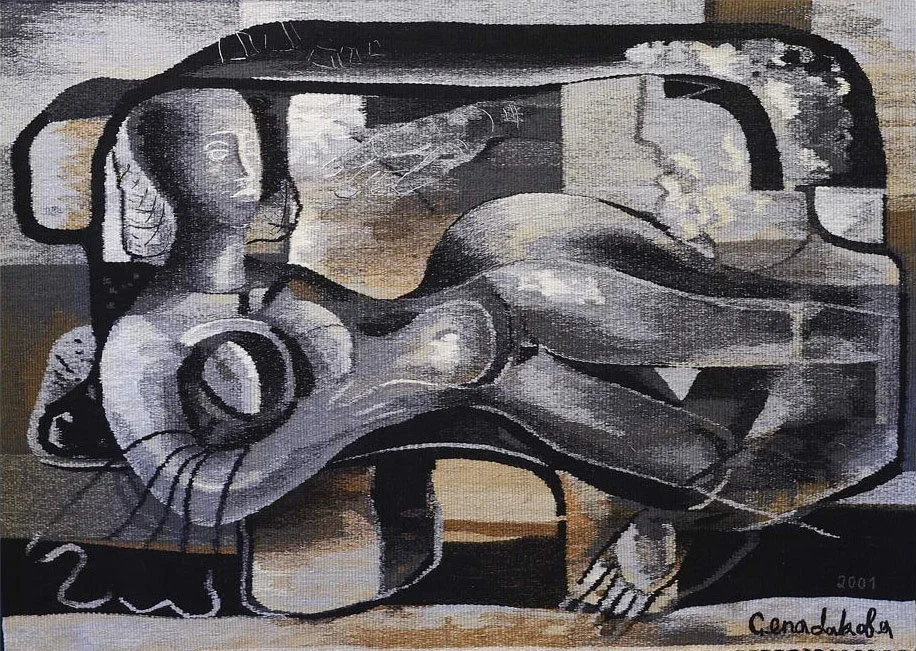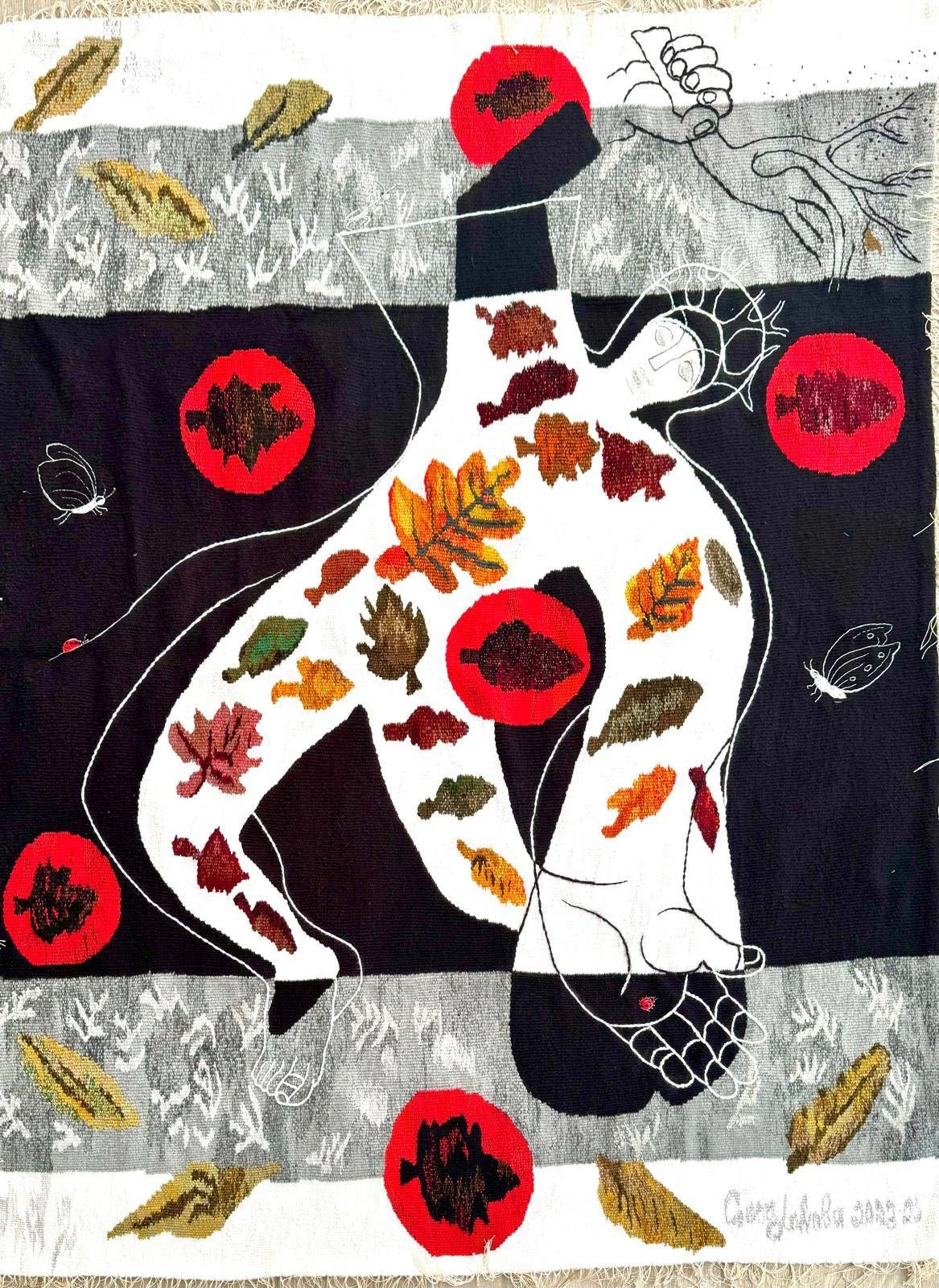10 Questions with Gennady Lakoba
Gennady Lakoba was born on August 11, 1948, in Sukhumi, Abkhazia (Georgia). He studied at the Sukhumi Art School and later at the Tbilisi Academy of Arts under renowned mentors, including Vasili Shukhaiev and Merab Tsintsabadze. In 1976, he joined the Union of Artists of the USSR and continued his studies in Leningrad in 1978.
Lakoba is a recognised member of several prestigious institutions, including the Moscow Union of Artists and the International Association of Artists (UNESCO), and an Honorary Member of the Russian Academy of Arts. His works have been exhibited internationally and are in public and private collections.
Since 1992, he has lived and worked in Belarus, Russia, and Spain. He is currently based in Spain and focuses on bronze and marble sculpture and drawings for tapestry projects.
Gennady Lakoba - Portrait
ARTIST STATEMENT
Gennady Lakoba's use of shape analysis in his work allows him to read the human figure and any object.
Painters and sculptors working in this direction use and develop the approach to form pointed out by Paul Cezanne. This is not a dogmatic scheme. With the accumulation of experience, the form is enriched. A play of details is created, then generalised, turning into one whole. As a result, we hear a symphony in which every detail plays its part. But culture, which is the base or the trunk, remains unchanged.
Amazing shapes, such as large and small volumes, bulges, depressions reminiscent of a raging sea, mountains, and female figures similar to them, are necessary for his work.
Gennady Lakoba strives to bring the presence of sculpture into the drawing as much as possible.
Awakening in a Dolmen, 2001 © Gennady Lakoba
INTERVIEW
First of all, can you tell us about your early years in Sukhumi and how you first became interested in art?
I was born in 1948 in Sukhumi, Abkhazia. My childhood unfolded in the Synop district - a vast area occupied by the Physical-Technical Institute of Atomic Energy. Since 1946, it had been a closed territory, home to around 300 German physicists working under the leadership of Baron Manfred von Ardenne and Gustav Ludwig Hertz. When Ardenne left in 1956, I was already eight years old. As a farewell gift, he presented my father with a bronze sculpture of a dog. I loved that sculpture - I used to play with it, even sleep with it under my pillow, waking up to it every morning. I never gave much thought to this story, but perhaps that sculpture, which resonated with me so strongly as a child, left a subconscious imprint that later shaped my path in life.
At the age of ten, I began studying at an art studio and later enrolled in the Sukhumi School of Art. I painted a great deal, especially in watercolour. Thanks to the influx of intellectuals who settled in Sukhumi permanently, I found myself in a rich cultural environment. Among them was the artist Varvara Bubnova, who had once moved in the same circles as Kandinsky and Chagall. After spending forty years in Japan, she returned to live in Abkhazia in 1958. Our acquaintance lasted for twenty years.
Other artists also played a role in shaping my artistic path - Sandro Razmadze and Merab Tsintsabadze. They may not be widely known, but they were deeply respected by me. It was through them that I was nurtured in the spirit of Western European culture. This influence extended far beyond visual art - it included literature, theatre, and music. That was when I first encountered the works of James Joyce, Samuel Beckett, Cézanne, Picasso, Braque, Le Corbusier, Heinrich Wölfflin, Klaus Bell, and many other artists, philosophers, and cultural figures who profoundly influenced my development. All of this became the foundation of my creative journey.
Luda, 1994 © Gennady Lakoba
How did your studies at the Tbilisi Academy of Arts and your mentors shape your artistic approach?
I entered the Tbilisi Academy of Arts already as a fairly well-informed student when it came to art. My early connection to Cézanne shaped my deep respect for Form and Volume - something that stayed with me throughout my life. I was never drawn to artworks with ideological or literary agendas; they felt distant to me.
I've always valued the ideas of Clive Bell, the formalist aesthetician. One of his statements resonates deeply with me: "The aesthetic value of art is valuable in itself, beyond any empirical or practical interest. The aesthetic meaning lies not in the subject, but in the content of form itself." That expresses my view of art with great precision.
At the academy, I studied under sculptors like Mikatadze, Gogi Ochiauri, Merab Tsintsabadze, and also under the remarkable draftsman Vasily Shukhaev. My friendship with Shukhaev, in particular, greatly enriched my understanding of art. I remember those years of study with real fondness. I was fortunate to be part of a circle that included some of the most prominent Tbilisi artists of the time, and with some of them, I formed lasting friendships.
You've lived and worked in several countries since 1992. How have these different environments influenced your work?
Fate led me to spend a period of my life in Belarus. Those were the most difficult years I've lived through - not in a political sense; I never get involved in politics. My path is to make art. Hard times pass, but art must not die.
Unfortunately, I didn't find like-minded people in the art world there, and I remained on my own. But at the same time, a new source of motivation appeared. In Belarus, I met several young women who came to my studio as models. Many of them inspired different compositions. They were beautiful, slender, and, just as importantly, precise and committed to their work.
I invited them to assist me in the technical execution of my tapestries. We did many exercises together, learning how to translate volume and colour transitions into textile form. Through this collaboration, I created a large number of tapestries in various sizes, and I continue to produce new ones.
Luda, 1996 © Gennady Lakoba
Anna, 2018 © Gennady Lakoba
How has your practice evolved over the years? What draws you to work with materials like bronze and marble today?
In my sculptures, there's an increasing interest in deconstructivism - the relationship between large and small volumes, their combination at the edge of collapse. I even made a special trip to Bilbao and was deeply inspired by Frank Gehry. There's something fascinating about that sliding boundary between sculpture and architecture. One of my works is dedicated to Frank Gehry, and I see it as the beginning of a larger continuation.
Lately, I've been working more with bronze. I love this ancient and reliable material, just as much as I love stone. For me, both are like an extended hand reaching out from deep antiquity, inspiring completely new and often unexpected creations.
You often speak of shape analysis and the influence of Cezanne's approach to form. How do you apply this in your sculptural practice?
For example, when I draw, I mentally visualise the object from all sides - even from above and below. Large and small forms must relate to one another. They should be enriched with volume, following Cézanne's approach: all objects in the real world can be reduced to a few basic geometric shapes. This helps to perceive pure form in a more complete way, without unnecessary embellishment.
When I sculpt, it feels as though I'm entering the form from within, pushing the volume outward. You can especially sense that in my piece "Margo."
Picasso, Braque, and Juan Gris - they all took Cézanne's essential seed and developed it into Cubism. I believe that this direction is far from exhausted, and that work with form must go on. It's always difficult to move art forward - especially today, with so many movements, trends, and unfortunately, a fair amount of charlatanism. In all this, it's essential not to lose one's way - and for that, knowledge of world culture is an anchor and a guide.
Coast, 1998 © Gennady Lakoba
Margo, 2019 © Gennady Lakoba
Nature and the human body seem deeply connected in your work. What role do these elements play in your creative process?
As a child, my father often took me to the mountains. I loved gazing at the towering peaks and deep valleys - the wild rivers stirred my imagination. The vast surface of the lake seemed to emphasise the landscape, acting as a pedestal for the mountains, which looked like abstract sculptures. In hindsight, it feels as if that was a kind of encoded message — something that would later shape me as an artist.
By the sea, I always loved watching storms - again, the play of large and small scales, of bulges and hollows. All of that lives within me now, working at a subconscious level. I thank my parents and God.
Your drawings are closely linked to sculpture. How do you bring a sculptural presence into your works on paper?
I've travelled many times across Europe, purposefully visiting museums and churches. In Florence, I studied the frescoes of Ghirlandaio — I was captivated by their restraint and stillness, much like the Quattrocento in general. I learned a great deal from them.
When I draw, I mark the most prominent forms. There's no outline as such — instead, there's a transitional shape that recedes behind the object. This approach allows me to render the subject with a strong sense of volume. At the moment, I'm working on a tapestry where I use this kind of static, sculptural drawing. If you're interested, I'd be happy to show it to you in the future.
Do you approach tapestry projects differently from your sculptural work, or do they share a common foundation?
Yes, there is one common foundation, just as in other genres of visual art — and that is CULTURE, along with the ultimate goal: to create a work of art. It's a path of doubts, experiments, mistakes, and moments of success.
Troll, 2025 © Gennady Lakoba
What themes or emotions are you most interested in conveying through your work?
These are emotions that are difficult to express through literary narrative. A sixth sense takes over. I can say with confidence: I never follow any particular psychological or philosophical idea. And if such an idea does appear in the work, it's only as a guest. Form, composition, and colour — they are the true creators of a particular emotional state.
Lastly, are there any upcoming projects or exhibitions you're currently working on that you can share with us?
I have many sketches and projects — some of which I've been developing for a very long time. Now, with the experience and knowledge I've accumulated, I'm finally in a position to bring many of these ideas to life. I would love to install several sculptures here in Spain, where I currently live, and to find spacious interiors where my tapestries can find their place.
After each work I complete, a new sail appears on the horizon - and once again, I move toward it. Rest is something I only dream of. Thank you for the thoughtful questions.
Artist’s Talk
Al-Tiba9 Interviews is a promotional platform for artists to articulate their vision and engage them with our diverse readership through a published art dialogue. The artists are interviewed by Mohamed Benhadj, the founder & curator of Al-Tiba9, to highlight their artistic careers and introduce them to the international contemporary art scene across our vast network of museums, galleries, art professionals, art dealers, collectors, and art lovers across the globe.






















